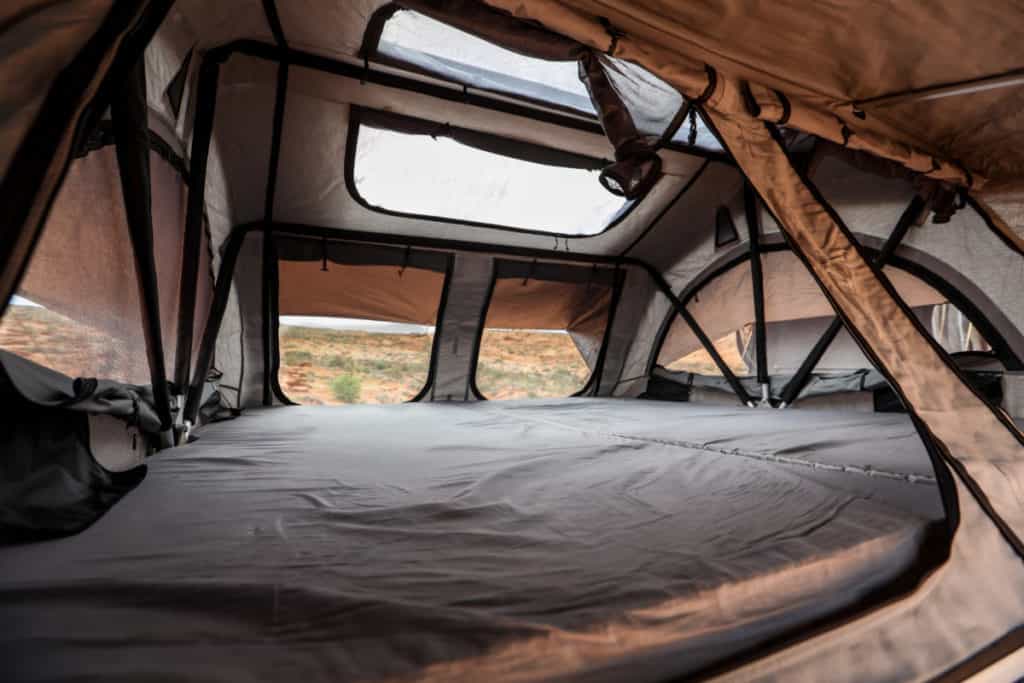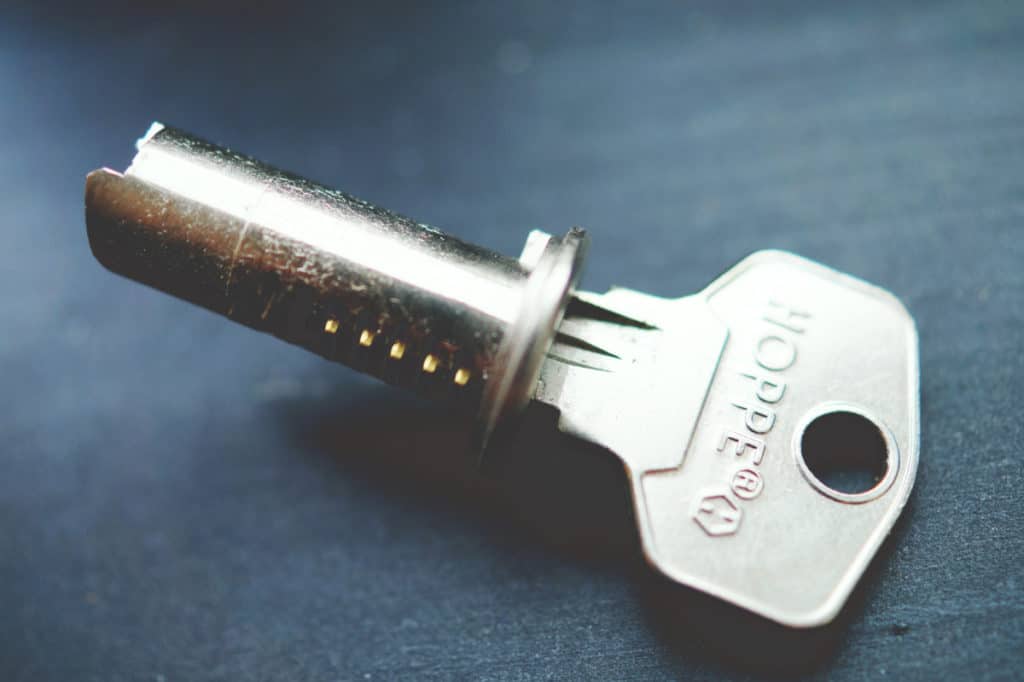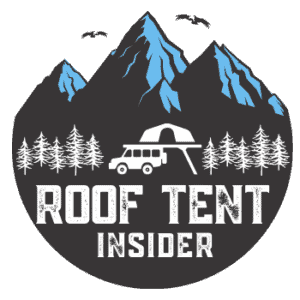The booming roof top tent industry has brought so much innovation and new features to the market. Now, you are left to decide which style and design is best for you!
The biggest question potential roof top tent (RTT) buyers have when shopping around is, “Are hardshell or softshell tents better?”. This is a fair question to ask since they are so different from one another.
In reality, there are a long list of differences that make each style better in their own right. So, the sole purpose of this article is to highlight those differences.
Key differences between hardshell and softshell roof top tents
1. Price
This is probably the most important consideration to all campers. If you’ve done any research on RTTs it won’t take you long to notice the price jump from softshell to hardshells.
I have bought a solid softshell RTT in the past for $900 all said and done, which is perfect for beginners and budget shoppers. You still get the full experience while figuring out if you truly love roof tents. Even then, you can still find softshell tents climb all the way up to about $3,000.
Meanwhile for hardtops, the market’s entry price is roughly $3,000 and max’s out at around $4,500.

Like many other things in life, you get what you pay for. Oftentimes, you are paying for the brand and not the quality or features of the product. My recommendation for newcomers is to limit your initial costs. Down the road, you can easily sell your RTT and upgrade to a different model.
2. Durability
It’s no question that all RTTs should be considered durable since they use thicker fabric than most ground tents. However, hardshell’s have the advantage here. The shell makes for a tighter seal that keeps dust, dirt, and mud out. It can also be made of plastic, fiberglass, or even aluminum.
All of those materials will hold up to normal wear and tear better than a cheap PVC cover on a softshell. Shelled tents typically use more premium materials and various aspects in the tent which results in a more long-lasting and durable build.
I want to emphasize that I still consider a softshell RTT durable and you shouldn’t have to worry about it breaking down on you after a few years. Certain brands double stitch the fabric on their tents, so if you’re worried about durability this can calm you nerves too!
3. Sleeping Capacity
Softshell RTTs feature the fold-out design which effectively doubles the tent’s sleeping area. In turn, this style of tent produces the biggest tents on the market! You can find numerous tents in this category that fit up to four adults. If you consider an annex a sleeping area, then technically you can fit up to seven people.
There are only a couple of RTT options on the market that have a hardtop and can fit four people. For example, the Roofnest Condor XL and Skycamp 2.0 by iKamper are your only options. These are the exception in the industry.
4. Fuel Consumption
No matter which RTT you put on your vehicle it will have an adverse affect on your fuel efficiency. The amount of wind resistance and drag created by the tent when you drive can also put added wear and tear on your vehicle over time.
Hardshell tents can be as slim as 7″ thick when closed! You can hardly notice they are there. Some manufacturers put an emphasis on testing the wind resistance of the tent and try to perfect its aerodynamics.
Since softshell tents are fold-outs, they are taller since half of the tent is stacked on top of the other. It’s hard to make this design sleeker and it can sometimes feel like you just put a brick on the roof of your vehicle.

Once again, for this particular issue hardshell RTTs have the advantage, but both will worsen your gas mileage in the end. There are a few simple steps you can do to reduce fuel loss as well as the wear and tear on your vehicle. I wrote a shorter article on this very topic, if you’re interested feel free to read more here!
5. Setup/Takedown Process
One of the biggest marketing ploys RTT companies like to use is the simple and convenient setup process they have. It is true that the set up is easy, clean, and convenient.
But some RTTs are lightyears quicker than others. Overall, you have to lean towards hardshell tents being fastest because they are assisted by gas struts. And if it’s a clamshell-style RTT you only have to push one side of the tent up and boom, it’s done!
Foldable tents can be quite fast as well. It depends on the model and manufacturer to some degree. Some implement a bungee system that helps deploy the tent quicker, while others may require extra steps for added durability or cover from the elements.
Though hardshells have gas struts to assist with the setup and are generally quicker to deploy, this isn’t always the case.
For example, FSR and iKamper are both great tent manufacturers and well respected within the space. They have put a lot of effort into making the setup process effortless. Both companies market the tent being able to setup/breakdown within 60 seconds. While iKamper makes hard shells, FSR produces mostly softshell tents, yet each can be setup extremely fast!
Being able to breakdown camp quickly is a significant consideration for some campers, if you’re interested in reading more about some of the quickest RTTs to setup, click here for another one of my articles!
6. Insulation
Staying warm is a necessity when you’re camping. You can find 4-season tents in both hardshell and softshell styles. But one is far superior than the other when it comes to insulation.
The answer is undoubtedly hardshell RTTs and I’ll explain why. It depends o the manufacturer and their design they implement, but overall the shell retains heat more effectively than a fabric tent ever could.
Take iKamper for example, they utilize one inch of air insulation between their double layered reinforced fiberglass shell! Not only does this retain heat, it also cancels noise and reduces condensation within the tent.
Softshell tents typically thicken the fabric to 360-grams, add an anti-condensation mat, and have a better insulated floor for their 4-season models. These are great and can absolutely get the job done, but hardtops take the cake in this category!
7. Weight
If you’re constantly taking the RTT on and off your vehicle or even have limited help to mount it, the weight of the tent is a major factor.
You can find softshell RTTs just under 100 pounds. These are typically 2-3 person tents and are not equipped for 4-season use. You can find a large amount of softshells from 100-125 pounds without a problem and that is one really nice thing about softshell tents. They tend to be more user friendly to smaller vehicles.
Some of you are reading this and saying, “But I’ve seen softshell RTTs weigh almost 200 pounds!”. And you’d be right! However, with any RTT, the bigger and more durable it is, the more added weight it will bring.
Now, if you look to hardshell RTTs, you will be hard pressed to find anything below 125 pounds. Besides the Skycamp Mini by iKamper (125 pounds) you won’t find much else close to this mark.
iKamper uses premium lightweight materials to reduce the weight of the hardtop tents. When you look across this entire category you will see they are much heavier and with good reason. The shell, thicker mattress, and heavy-duty components weigh hardtops down.
This may or may not be a negative to you. I think for many it will be a huge factor when they go to buy a RTT for a variety of reasons. For a nice chart comparing over 20 RTT weights, click this link to my article and you will save yourself hours of research comparing tents!
8. Weather Resistance
Almost all RTT companies market their tents to be waterproof. While some are more resistant to absorbing water than others, one style is best for this in particular.
Hardtops overall are great, but I would give the pop-up style the slight edge here. The reason I say that is because a clamshell or hybrid hardtop exposes a lot of fabric. Whereas a hardtop is limiting the fabric exposed to just the walls and the shell protects you from the elements.
If it rains or snows really heavy, an all fabric tent will inevitably absorb the water. Which really isn’t a huge deal unless you’re on a long camping trip. Otherwise, as long as you dry and air the tent out once you’re home or out of the rain you will be fine.
9. Variety of Styles
If you’re a beginner you probably don’t care too much on which styles you can choose from between pop-up, clamshell, foldable, or a hybrid.
Softshells are limited to just the foldable design, which is actually preferred by many campers.
Hardtops feature some more unique designs, leaving you with multiple options to choose from. The first is your classic pop-up, the second is a sleek clam-shell, and the third is a fancy hybrid that utilizes a foldable component as well as a clamshell-style. A hybrid example would be the Skycamp 2.0 or Condor XL.
Fact of the matter is, if you prefer a certain design or style hardshells have a few more options. But if you prefer that classic fold-out tent, softshells are best for you!
10. Wind Resistance & Noise
Camping in the desert or mountains will frequently bring high winds when you don’t expect it. Softshell tents are more susceptible to flapping in the wind. They can handle high winds but will be noisy while doing so. Look towards something like the FSR High Country in the softshell category. It has a heavy-duty frame and tri-layer fabric that is more wind resistant.
From a general point of view, hardshell RTTs will provide a more sturdy structure against high winds. Some market their tents being tested against wind speeds of 60 MPH! The hardshell design will be more quiet because it wont be flapping around in the wind.
11. Comfort & Bedding
Yet another major consideration you should have when buying roof top tents. This is a tough one but for the most part, since hardshells are more premium they have softer and thicker mattresses. This comes down to quality as well as design enabling more padding.

Softshell’s must fold up and if they have a three inch mattress, that’s roughly six inches of padding when folded. Now I have seen plenty of softshell’s with 3″ mattresses which is plenty thick. On the high-end of hardshell’s I have seen up to a 3.5″ thick mattress. Yet, iKamper features a 1.8″ mattress but it is made of high-density foam.
Thickness isn’t always the key factor, but also the material of which it is made of. One of the best things about hardshell tents is the ability to keep all of your bedding in the tent when you need to pack up and go. Blanket, pillows, and bedding can be left in the tent when being packed away.
Some foldable tents have this ability, but if you have one too many items in the tent it will be too thick to fold. It can be a pain in the butt taking bedding and pillows out of the tent, especially if you need to use your vehicle to explore everyday on your camping trip.
12. Roof Racks
It’s common for campers to have hobbies like hiking, kayaking, SUPing, and more. Well, how are you supposed to bring your RTT and extra gear at the same time?
A fair amount of hardshells in the market have additional racks that you can buy and attach to your RTT. Some can hold weights of up to 250 pounds and they look pretty cool! I can see this coming in handy for so many people and is a great upgrade to make down the road if you need it.
The only softshell I have seen that has this feature is the X-cover by iKamper. It isn’t your traditional softshell because it doesn’t feature a cover. If you check out their website you will quickly understand what I mean. Even though hardtop’s have the upper hand here, you still have an option for a softshell RTT with this feature.
13. Footprint
As I have said many times in this article already, softshell RTTs have a foldable design. One major benefit to this is the smaller footprint they have when folded up. They take up less space and are able to fit onto smaller vehicles with limited roof space. Then, when you go to use the RTT the size of the tent doubles!
When you have a hardshell RTT it needs to be at least six feet long to have enough sleeping space. Naturally, this footprint typically fits best for full-size SUV’s and trucks.
If you’re looking for a more spacious tent, you will find WAY more options in the softshell category than hardshell’s. Some campers like the extra space to move around, while some prefer a more boxed in and cozy feel. To each their own, but this is a notable difference between the two styles!
14. Storing the RTT
Another thing about a fixed footprint is the amount of space it takes up when you store it. You may have plenty of space in your garage, but like many people you have limited storage space.
Clearing out an entire carports worth of area to accommodate a RTT might not be realistic for some. However, you can get extremely creative with a pulley system or wall mount to keep it stored safely while being out of the way.
If you care to learn more, I wrote a separate storage guide article going over some tricks and tips on how to properly store your tent during the off-season.
15. Annex
Having an annex is great for extra storage, more sleeping area, changing room, etc. This accessory is by far the biggest game-changer for RTTs and once you have one you’ll never look back.
Most hardshell RTTs don’t have the addable annex option. Pretty much every softshell on the market either comes with or has a separate purchase option for an annex. Having an enclosed shaded area can be handy for dining, cover from harsh weather, and much more!
16. Driveability
Due to the sleek design of most hardshell RTTs, they provide a smoother driver. Not only will it feel better on the road, but it will be quieter than a softshell.
The low profile hardtops won’t create as much drag or catch winds as easily, which means you will feel less sway in your vehicle. Since hardtops take up most if not all of your roof, they typically are centered in relation to your vehicle. Which is great for proper weight distribution.
It is important to do the same with a softshell and distribute the weight evenly across your vehicle. For many, this means positioning the RTT to the front-most part of the roof rack, which will be more in the center of the vehicle.

17. Vehicle Fit
A huge buying consideration every person needs to be sure of is, “will this tent fit my car?”. For many, the simple solution is to buy the smallest and lightest tent if they have a smaller vehicle like a sedan. While I wouldn’t recommend anyone ever do this, it has been done.
You do need to check your vehicle and roof racks manual for recommended weight limits. A general rule of thumb is 2 person tents can be put on just about any car, while anything heavier or bigger needs to be on an SUV or truck.
Many manufacturers detail this on the sales page about the tent, but softshells are much more friendly to smaller vehicles. And it’s not like you’re gonna go out and buy a new truck to camp with!
18. PVC Cover
This is the cover that protects all softshell RTTs from dust, rain, or any other weather when it is packed up. They are a real pain because they take a good bit of time to get off and on your tent. After a few uses they get pretty dirty and in turn so do you. Over time, the cover will likely fray and need to be replaced.
We talked a bit about durability before so I won’t expand too much further, but the cover may allow dust and dirt to get in as you drive down the freeway. The hardshell eliminates the dirty and time-consuming process which is quite nice.
19. Tent Materials
Overall, hardtop tents are made with more expensive and high-quality materials. This is where companies put most of their innovation and design efforts as well.
You won’t see stainless steel and full body aluminum tents in the softshell category. Hardtops cost so much because the mattress, fabric, shell, and frame are more superior.
20. Luxury (LED, solar panel)
Glamping is becoming more and more acceptable as time passes. I enjoy my fair share of luxury too!
It would be more common to find upgrade like solar power, LED lighting, and USB ports in hardshell tents. Now this isn’t true in all scenario’s! For example, I know CVT’s Summit edition tents feature USB ports. But how many softshell tents out there can have solar panels, ventilation systems, and 12V plugins?
21. Headroom
A downside for all RTTs is not being able to walk around the tent. However, some are far more generous with the headroom than others. This particular issue will probably resonant more with the taller audience.
Softshell’s have a good amount of headroom in the middle of the tent since most feature an A-frame design. But in the corners of the tent you may have to duck down.
Hardtop styles like a pop-up can vary offer much more headroom typically which is great so you don’t have to slouch down as you sit inside the tent. If you’re on the taller side, look at the tent specifications!
22. Looks
Overall, RTTs look awesome when you’re using them. Oftentimes, you will have near by people at the campground as you about it!
When talking about looks, there is no doubt that hardshell’s look way cooler! They are sleek, inconspicuous, and look very premium when atop your vehicle.
23. Overhang & Shaded Area
One huge perk to softshell RTTs is the shaded area they provide as they foldout and hangover your vehicle. This area can supplement an awning for just a couple people. It is a really nice space to have to escape the sun or pouring rain at times!
24. Tent Entry Points
Being able to enter the tent from multiple points by simply moving the ladder can be very handy. Sometime you will have to unmount and maneuver a softshell to have it face the way you prefer.
With a hardshell, you can often enter from 3-4 sides of the tent which is just nice to have as a frequent camper.
26. Ventilation
Some premium hardshell RTTs like the James Baroud line have built-in ventilation systems to circulate air in and out of the tent better.
Depending on the softshell model you go with, it may have a door or two. While most hardshell RTTs have four windows or doors that allow for great airflow. The more premium fabric used on the tent will also affect its ability to “breathe”.
When you’re camping in the mid of summer, an extra airflow you can get is a real help to keeping you cool.
27. Privacy
Concerning privacy, since softshells can be much bigger than a hardshell when setup, they have more privacy options. The CVT Mount Denali and other tents in the market feature divided rooms, ladders, and entrances.
This extra and separated space would be handy for siblings or friends you want to bring along for a trip. Hardshells are so confined to their limited space that they can’t offer this feature.
28. Tent Locks
We have talked about the PVC cover that protects the softshell RTT. Unfortunately, there is no way to lock this and stop a random person from opening your tent. While it is very unlikely, it is an expensive piece of equipment and you want to be sure it will be safe.
Hardshell’s have latches that keep the tent closed which can come with a locking system to keep it closed. This way, you won’t have to worry about someone opening the tent when you’re away from your car.

29. Ladder
Most of the entry level softshell RTTs come with a sliding ladder. It slides across a track when you extend it, then is secured by lining a knob up perfectly with a preset hole.
These ladders tend to get dirt in the tracks which make them stick as you try to slide them out. It is also a pain to line the knob up perfectly with the tiny precut hole. Though, some premium softshells like CVT and Tepui feature the more preferred telescoping ladder.
Most if not all hardtop RTTS feature the telescoping ladder. It works just like a telescope and the ladder extends from linking part of the ladder. These are far less fussy to set up and preferred over sliding ladders by virtually every camper.
30. Weight Capacity
A very common question asked about RTTs is “how much weight can they hold?”.
Well, as you can imagine it varies dramatically. The general rule of thumb is the amount of people the tent is advertised to fit, each person is allocated 200 pounds. For example, a three person RTT can hold 600 pounds total.
Some tent manufacturers detail these specs more clearly than others. The hardshell tents made of aluminum, metal, and fiberglass often feature a honeycomb design within the floor. This allows for an extremely strong and durable floor to support weight within the tent.
Conclusion
The price of hardshell RTTs reflect the added features, luxury, and durability they offer over a softshell. But you probably knew that already. This article set out to clearly state those differences and see if they matter enough to you.
Each camper requires different things to fit their lifestyle. That is why there is a huge market for budget RTTs, while also a market for premium ones. Certain aspects of a tent matter much more to some than others, at least this way you know the key differences between the two RTT styles going forward.
Both are great options and won’t let you down. No matter which model, style, or design you go with, you will always find the pros and cons of everything out there!
